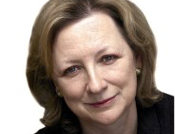Carla Carlisle on a new Wyken map
When she finally gets round to commissioning a new map of Wyken, Carla wants a yellow dog sitting upright in a canoe in the middle of Lake Bofus in memory of a noble four-legged friend


One of these days, we are going to get a new map made of Wyken. We have faded maps that were drawn by meticulous mapmakers in the 17th and 18th centuries, maps that show intimate fields and woodlands on a human scale, but our only modern maps of the estate look like satellite-navigation projects required by Defra.
The reason for the delay is a conflict of desire. I want a map that has the poetry of our ancient maps, a map that looks like wrap-ping paper that Matthew Rice created in the 1980s, with water-colour fields of sheep and cattle, and trees that look like bridal bouquets of broccoli. A map you might call Pastoral Romantic. My husband wants a map that accurately records fields and the exact legal boundaries of our land deeds. While we’ve hemmed and hawed, we’ve planted thousands of trees a dreamy attempt to block out lights on the A143 two miles away and laid miles of hedges, remorse for those ripped out 30 years ago. But, best of all, we’ve created two lakes: Lake Bofus and Big Bofus. Nobody gets it at first.
And then I explain that ‘Bofus’ is southern for ‘both of us’, that the two farm workers on my grandmother’s dairy farm never did anything single-handed. Whatever the job, Dude would say ‘Bofus can do it’, and off he’d go with Plez to grab a bale of hay, move the Guernseys to another field, kill the snake curled up in the chicken house. Bofus became part of our secret language as children, and, in a blitz of nostalgia, the name of a much-loved friend and companion, a yellow English labrador. If our new map of Wyken survives as long as the maps hanging in the back hall, the name Bofus might stick out. After Bofus the dog, we just went wild.
First, there was two-acre Lake Bofus (now known as Baby Bofus), then, inspired by that lake, we created Big Bofus, a four-acre lake. Out of the earth excavated for Big Bofus, we created a steep hill we christened Mount Bofus, overlooking a playground for dragonflies we called Swamp Bofus.
The whole area is called Yellow Dog National Park, a name that lacks the Englishness of a Suffolk estate that is older than America. My greatest pleasures over the past few years have been my walks up to Big Bofus with the lake’s canine namesake. I’d take a thermos of coffee, a book and a cushion, and Bofus and I would get into the Old Town canoe, gliding around the lake like a Buick on a Sunday afternoon drive. We’d stop in the middle, and, while I read, Bofus kept his eye out for fish.
He never looked bored. We could have been a cover for the L. L. Bean catalogue. All this is in the past tense. On Saturday, we took Bofus to the vet in Diss because the ear infection we’d been treating all summer was getting worse. The vet suspected a tumour and told us to prepare for the worst. In fact, we’d been preparing for the worst all summer long.
The vet gave us options. An MRI scan at £1,500. A delicate operation in Cambridge that would require the skill of a veterinary neurologist: £3,000. A prolonged convalescence with no guarantee that the tumour would not come back. We like to think that we made our decision based on what was best for a nine-year-old dog, not our finances.
Sign up for the Country Life Newsletter
Exquisite houses, the beauty of Nature, and how to get the most from your life, straight to your inbox.
We wanted his last memories in life to be swimming out to the canoe and carrying the paddle back to shore in his mouth. When we finally get around to commissioning our map, I want a yellow dog sitting upright in a canoe in the middle of Lake Bofus. It may mystify future rural historians, but noble Bofus was a dog worthy of his place in the history of the Suffolk landscape. Meanwhile, we console ourselves with the wisdom of S. J. Perelman, who said: ‘Outside of a dog, a book is a man’s best friend. Inside of a dog, it’s too dark to read.’
Country Life is unlike any other magazine: the only glossy weekly on the newsstand and the only magazine that has been guest-edited by HRH The King not once, but twice. It is a celebration of modern rural life and all its diverse joys and pleasures — that was first published in Queen Victoria's Diamond Jubilee year. Our eclectic mixture of witty and informative content — from the most up-to-date property news and commentary and a coveted glimpse inside some of the UK's best houses and gardens, to gardening, the arts and interior design, written by experts in their field — still cannot be found in print or online, anywhere else.
-
 Six rural properties with space, charm and endless views, as seen in Country Life
Six rural properties with space, charm and endless views, as seen in Country LifeWe take a look at some of the best houses to come to the market via Country Life in the past week.
By Toby Keel
-
 Exploring the countryside is essential for our wellbeing, but Right to Roam is going backwards
Exploring the countryside is essential for our wellbeing, but Right to Roam is going backwardsCampaigners in England often point to Scotland as an example of how brilliantly Right to Roam works, but it's not all it's cracked up to be, says Patrick Galbraith.
By Patrick Galbraith